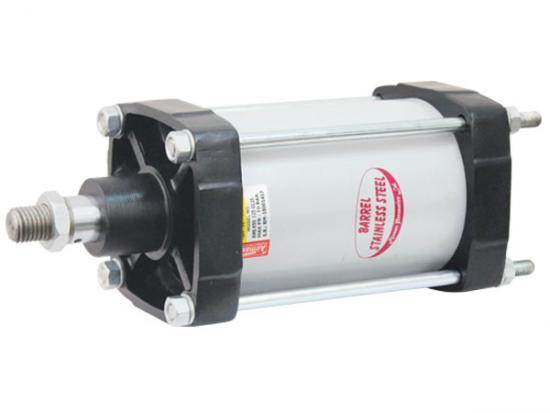|
Pneumatic cylinders are mechanical parts that give straight power to different gadgets and frameworks. They produce the power by applying packed air aside from a fixed barrel and depleting it from the opposite side. This activity causes the cylinder/pole gathering contained inside to broaden or withdraw. It is vital to accurately introduce pneumatic cylinders. In any case, there is a gamble of erroneous or untrustworthy activity and untimely disappointment. This is particularly valid for hydro-pneumatic cylinders, which create high powers in a little bundle. Thusly, the inaccurate establishment can prompt extreme hardware harm and additionally administrator injury. Underneath, we examine how to appropriately introduce a pneumatic cylinder. Furthermore, we feature the significance of testing the framework before placing it into activity and the precautionary measures to take while performing establishments. HOW DO I INSTALL A PNEUMATIC CYLINDER PROPERLY?
There are two fundamental fixing focuses to consider while introducing a pneumatic cylinder: the body and the cylinder bar end. How these focuses are fixed relies upon the application. In static applications, the cylinder can be mounted to the machine seat and fixed unbendingly to its construction. Both pneumatic and hydro-pneumatic cylinders are commonly mounted with a rectangular front rib mount (likewise in some cases called an MF1 mount or FH mount) or tapped openings toward the front of the face (additionally in some cases called an MR1 mount or UH mount) because of the great powers created. In any case, a few pneumatic cylinders utilize a semi-unbending trunnion mounting technique (MT1) that uses body supports or turns and clevis pins. It permits them to turn as they follow the expansion and withdrawal of the cylinder bar. In uncommon cases, a side carries mounting technique (MS2T mount) might be utilized. In complex linkage applications, the cylinder should have the option to turn on its mountings. There are a few answers for this mounting prerequisite. For instance, a front clevis, focal trunnion, or back pivot can be utilized on the body of the cylinder to permit the cylinder and burden framework to accomplish various levels of equilibrium. On the other hand, a clevis, front pivot, or general eye can be utilized toward the finish of the cylinder bar to mount turn connections. If a trunnion mounting technique is picked, it is fundamental to guarantee the cylinder can sway openly on the mountings and the line associations can flex when being used. A portion of what to remember while introducing a pneumatic cylinder include:
For what reason SHOULD I TEST THE SYSTEM? Before placing a cylinder into activity, it is essential to test the whole framework to guarantee the part incites with negligible obstruction and the bar encounters insignificant side stacking. Testing tasks can be directed by utilizing an adaptable carrier and blow firearm to check the cylinder is introduced appropriately and ready to move openly at the distributed least working tensions. For hydro-pneumatic cylinders, it is essential to test them in low tensions (approach and withdraw) without going into high tensions (escalation) to guarantee the tooling and by and large arrangements are adjusted accurately. These testing tasks should adhere to the maker's rules for sequencing the cylinder for approach, withdraw, and increase. WHAT PRECAUTIONS SHOULD I TAKE WHEN INSTALLING PNEUMATIC CYLINDERS?
0 Comments
Leave a Reply. |
AuthorWrite something about yourself. No need to be fancy, just an overview. Archives
June 2022
Categories
All
|


 RSS Feed
RSS Feed
